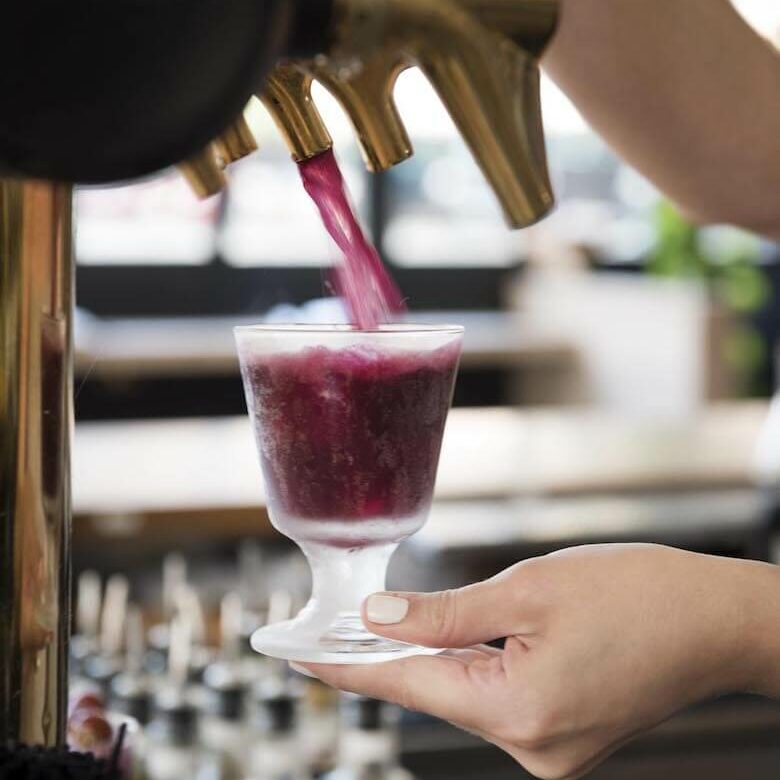
You don’t often hear “pisco” on its own in the States. It’s almost always combined with “sour” as a reference to the frothy Peruvian cocktail (one of the country’s two national drinks, no less) whose most basic ingredients include an egg white, simple syrup and lemon juice. It’s a perfectly balanced combination when done right, but as the bar at Williamsburg’s Llama Inn shows, it’s only one gateway to a world of pisco options.
Light bodied with a sweet aftertaste, pisco is a versatile, clear brandy. With notes of grape and apple, it works well for after-dinner sipping but isn’t so overpowering that it can’t complement other ingredients, too. “Most of our drinks have a pisco element; either they’re made with pisco or from pisco grape products,” Lynnette Marrero says.
She directs the bar at Llama Inn, where New Jersey–raised chef Erik Ramirez, a son of two Peruvian immigrants, offers modern interpretations of traditional flavors and ingredients. In this vein, Marrero’s version of a pisco sour, called “Flying Purple Pisco,” uses a Peruvian purple potato puree to give the drink more texture. She boils the potatoes, adds sugar and water and then mashes the mixture. “It’s a light and fluffy pisco sour,” she says.

Another example of Marrero’s play is her version of a classic pisco punch—a cocktail typically made with pisco pineapple, lime juice, sugar, natural gum and water—that includes chef Ramirez’s grandmother’s recipe for chicha morada, aka boiled purple corn drink infused with pineapple rinds, cinnamon and cloves.
That drink, called the “Llama del Rey,” is one of the restaurant’s most popular. “Every household uses different spices and fruits, and when I tasted Eric’s grandmother’s recipe, it had so many beautiful [flavors evoking] the spice trade from China and Japan. I also wanted to use aged rum—obviously keeping it in the Caribbean—blending that with our pisco for this great melding of tradition,” Marrero said. “I balanced it all with a Spanish malbec to bring in the [colonial] influence, so this cocktail is kind of the story of Peru in its own way.”
—
Flying Purple Pisco
Yield: 1 cocktail
0.5 ounce lemon
0.5 ounce lime
1 ounce simple syrup
1 ounce, or a melon scoop purple potato puree*
0.5 ounce egg white
2 ounces Macchu Pisco
Shake without ice to froth the egg white. Shake again with ice. Double strain.
*Purple potato simple-puree (1:3)
Makes ½ quart (enough for 16 drinks). Modify yield by increasing or decreasing potato quantity.
Boil roughly 1 quart of purple potatoes until a skewer easily slides through the potato. Let cool and use a towel to peel skin off of the potatoes. Make a rich simple syrup (2 parts sugar to 1 part water), and combine 1 part rich simple with 3 parts peeled purple potato. Mash/blend with a spoon or a whisk in a container before placing mixture in a Vitamix for a smoother blend. Return to container periodically to mix by hand to make sure the puree is even throughout. Will keep refrigerated for 1 week.



